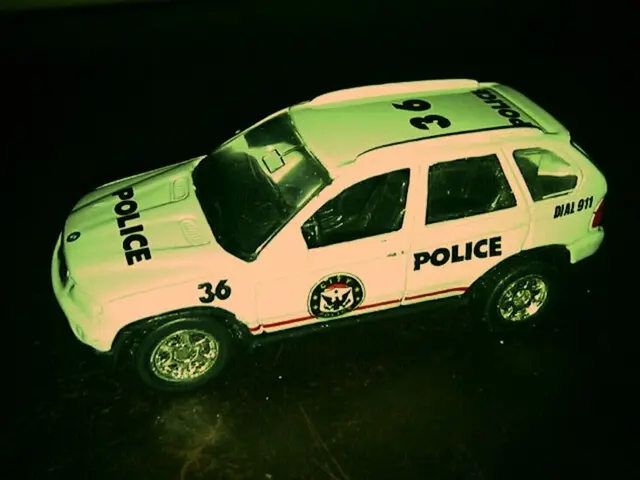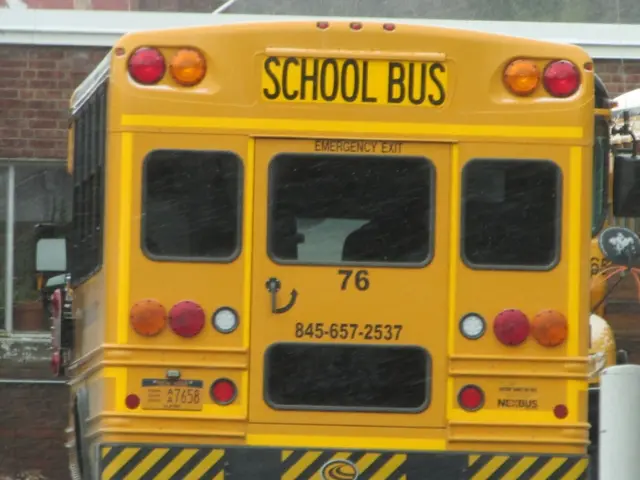Building a DIY Bee Watering Hole: A Helping Hand for Garden Pollinators!
Household Construction Guide: Creating a Bee Hydration Station
Ever thought about saving the bees and other beneficial insects in your garden, patio, or balcony? Here's a quick guide to creating a DIY bee drinking trough - it's easy peasy and incredibly beneficial for pollinators!
Why a Bee Watering Hole Matters
All bees need water for their metabolism, and honey bees also use it for cooling their hive, producing feed juice for their larvae, and honeydew. Wild bees, however, primarily use it for building their nesting sites. As climate change and water scarcity affect nectar sources, it's crucial to provide alternative water sources for these busy little helps!
By creating a bee drinking trough, you're not just offering the insects much-needed hydration; you're also protecting endangered wild bee species and ensuring the pollination of countless plants, ultimately safeguarding our food security!
Materials You'll Need
To make the bees feel at home, we're going for a natural, safe, and inviting environment. Here's a list of materials I used in my bee drinking trough:
- A clay flowerpot coaster (min. Ø 20 cm; available here)
- Small branches or pieces of wood
- Stones
- Moss
- Water
Building Your Bee Drinking Trough
You're ready to create the bee drinking trough! Remember some essential tips before starting:
- Choose a sunny yet wind-protected location for the bee trough. Ideally, it should be close to a wildflower meadow or a wild corner in the garden.
- A warm spot is ideal, but make sure it gets some shade during the hottest part of the day to prevent the water from overheating.
Now it's time to breathe life into your DIY bee drinking trough using these simple steps:
- Select the Bowl: Pick one of those flat clay flowerpot coasters. It'll serve as the water basin for your bee drinking trough.
- Add Branches and Stones: Fill the bowl with small stones and branches. These shall serve as landing surfaces for bees, butterflies, and other insects.
- Include Moss: Add some moss to offer additional support. Insects often suck water droplets that adhere to it directly.
- Pour in the Water: Now fill the saucer with water, making sure the material remains dry for a safe landing surface.
- Check Regularly: Keep the water topped up and clean to ensure the bees have a constant source of water.
And there you go! Building a bee drinking trough doesn't require rocket science, and it's a great opportunity to connect with your children and learn about nat Saburee biodiversity.
Embracing Your New Pollinator Friend
Building a bee drinking trough costs (almost) nothing, is a breeze, and an excellent way to help the little garden dwellers. With a few natural materials, the ideal spot, and a little elbow grease, you'll provide a lifesaving water source for wild bees and other insects!
If you're still eager to lend a hand, consider the following:
- Support native plants: Incorporate insect-friendly small trees and bee-friendly wild roses into your garden.[2][3]
- Build a sandarium or create a pile of stones for even more habitat and shelter.[4]
Stay close to nature and make a difference today!
Stay environmentally conscious, PS:
- If you still have some creative energy left and want to do even more, learn about the magic of building a sandarium or a species-rich pile of stones.*
[1] Xerces Society. "Insect-friendly Gardening: A Guide to Attracting and Retaining Pollinators and Natural Enemies to Your Garden." 2014. Link[2] The Garden Lady. "A List of Beautiful Insect-Friendly Trees You Can Plant in Your Garden." 2019. Link[3] Wild Rose Revolution. "10 Wild Roses That Will Support the Bees and other Pollinators." 2020. Link[4] GardenMyths. "Building Sandariums and the Importance of Insect Hibernating Sites." Link[5] Bee City Canada. "Bee Watering Stations." 2021. Link
- By creating a DIY watering hole for bees, you're not only providing much-needed hydration for these industrious pollinators but also aiding in the protection of endangered wild bee species and ensuring the pollination of countless plants, safeguarding our food security.
- To make the bees feel at home in their new watering hole, consider using environment-friendly materials such as a clay flowerpot coaster, small branches or pieces of wood, stones, moss, and water.
- Through the process of building a bee watering hole, you'll have an opportunity for personal growth as you learn about biodiversity and connect with your children, teaching them the importance of protecting and helping our environment.
- In addition to building a bee watering hole, you can further support native plants, such as small trees and bee-friendly wild roses, to create an even happier home for these essential garden dwellers.








